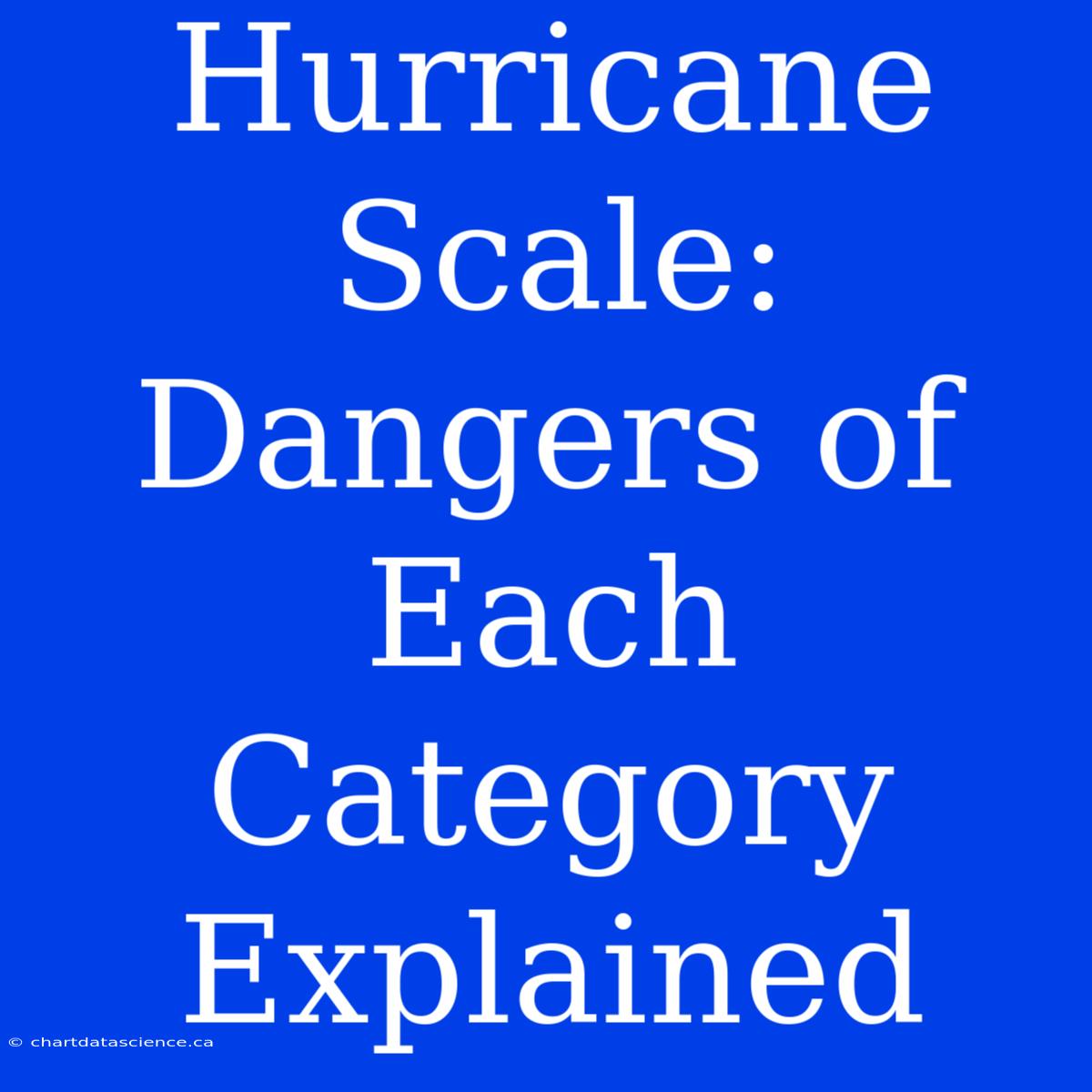Hurricane Scale: Dangers of Each Category Explained
Hurricanes, those swirling storms of wind and rain, can be incredibly destructive. We all know they're powerful, but how powerful exactly? That's where the Saffir-Simpson Hurricane Wind Scale comes in. This scale, ranging from Category 1 to 5, classifies hurricanes based on their sustained wind speeds, giving us a glimpse into the potential damage they can inflict.
Understanding the Hurricane Scale
The Saffir-Simpson Scale is a handy tool for understanding the potential dangers of a hurricane. Each category is defined by a range of sustained wind speeds, with higher categories indicating stronger storms and greater destructive power.
-
Category 1: (74-95 mph) - Think of a strong gust of wind. Expect minor damage to trees and power lines, but most structures should be okay. This category is the least severe and usually causes minimal widespread damage.
-
Category 2: (96-110 mph) - More intense than Category 1, these storms can cause significant damage to trees, power lines, and some roofs. Some structural damage is possible, especially to older or poorly constructed buildings.
-
Category 3: (111-129 mph) - Major damage begins to become a real concern with a Category 3 hurricane. Expect widespread damage to trees, power lines, roofs, and structures. Flood risk also increases due to storm surge.
-
Category 4: (130-156 mph) - These hurricanes are incredibly dangerous! Expect extreme structural damage, including complete roof failure and significant damage to walls. Widespread power outages and flooding will be common.
-
Category 5: (157 mph or higher) - The most dangerous category, Category 5 hurricanes bring catastrophic damage. Expect complete roof failure, widespread structural damage, and severe flooding. These storms can level buildings and cause significant life-threatening damage.
It's Not Just About Wind
It's crucial to remember that hurricanes are complex systems, and the wind speed is only one factor determining their impact. The size of the storm, storm surge, and rainfall all play critical roles in the severity of a hurricane's effects.
-
Storm surge: The abnormal rise in sea level during a hurricane, caused by the storm's powerful winds pushing water onshore, can lead to devastating flooding. Coastal areas are particularly vulnerable to storm surge.
-
Rainfall: Heavy rainfall can lead to flash floods, overflowing rivers, and landslides. These effects can be felt far inland, extending the impact of a hurricane beyond its immediate path.
Stay Safe During Hurricane Season
Being prepared is essential for surviving hurricane season.
- Stay informed: Monitor weather forecasts, local news, and official warnings.
- Have a plan: Know your evacuation route and have a plan for where you'll go in case of a hurricane warning.
- Prepare your home: Secure loose objects, trim trees, and prepare a hurricane kit with essential supplies.
Remember, safety is the top priority during hurricane season. By understanding the dangers of each hurricane category and taking appropriate precautions, you can minimize risks and ensure your well-being.

